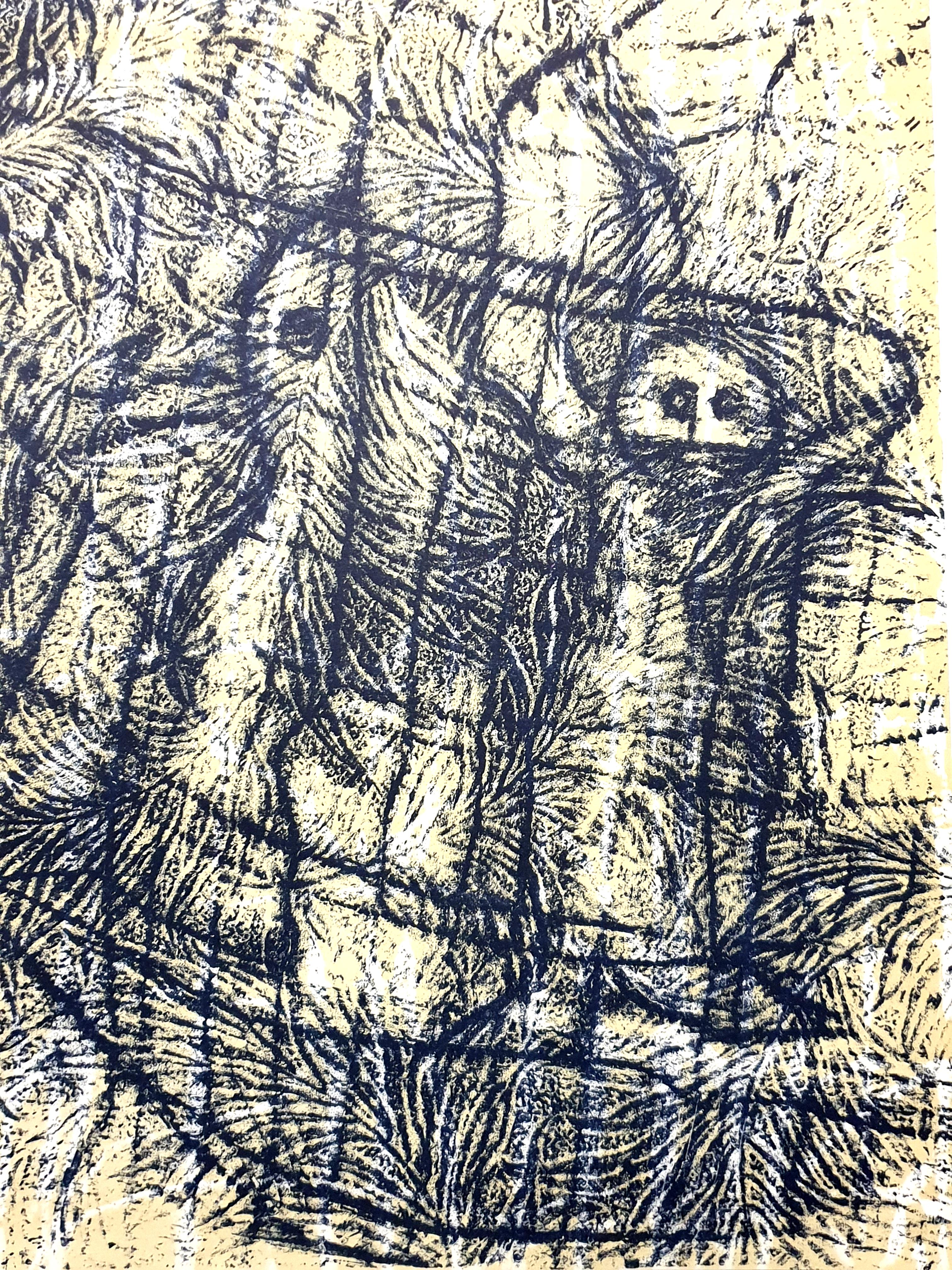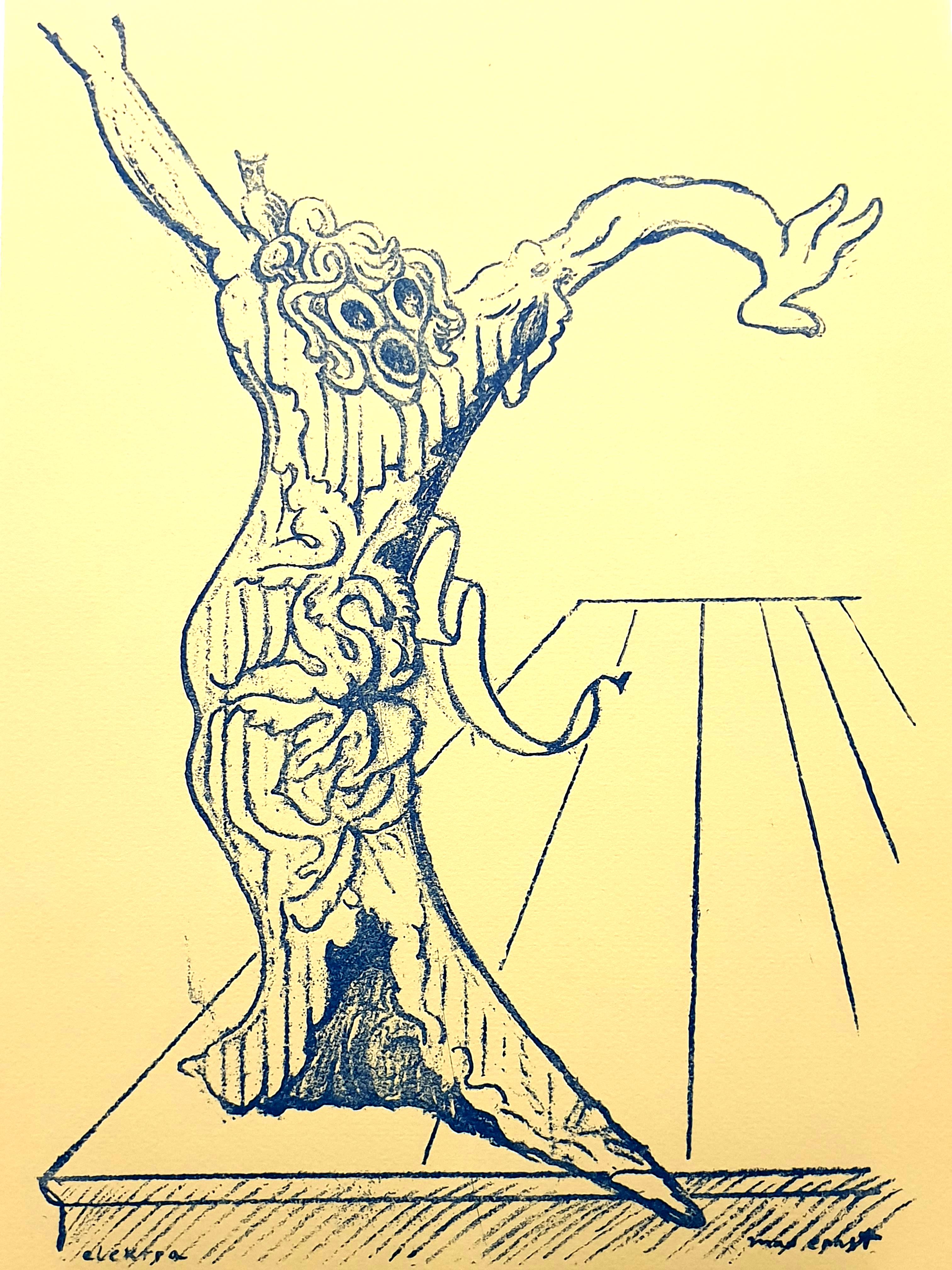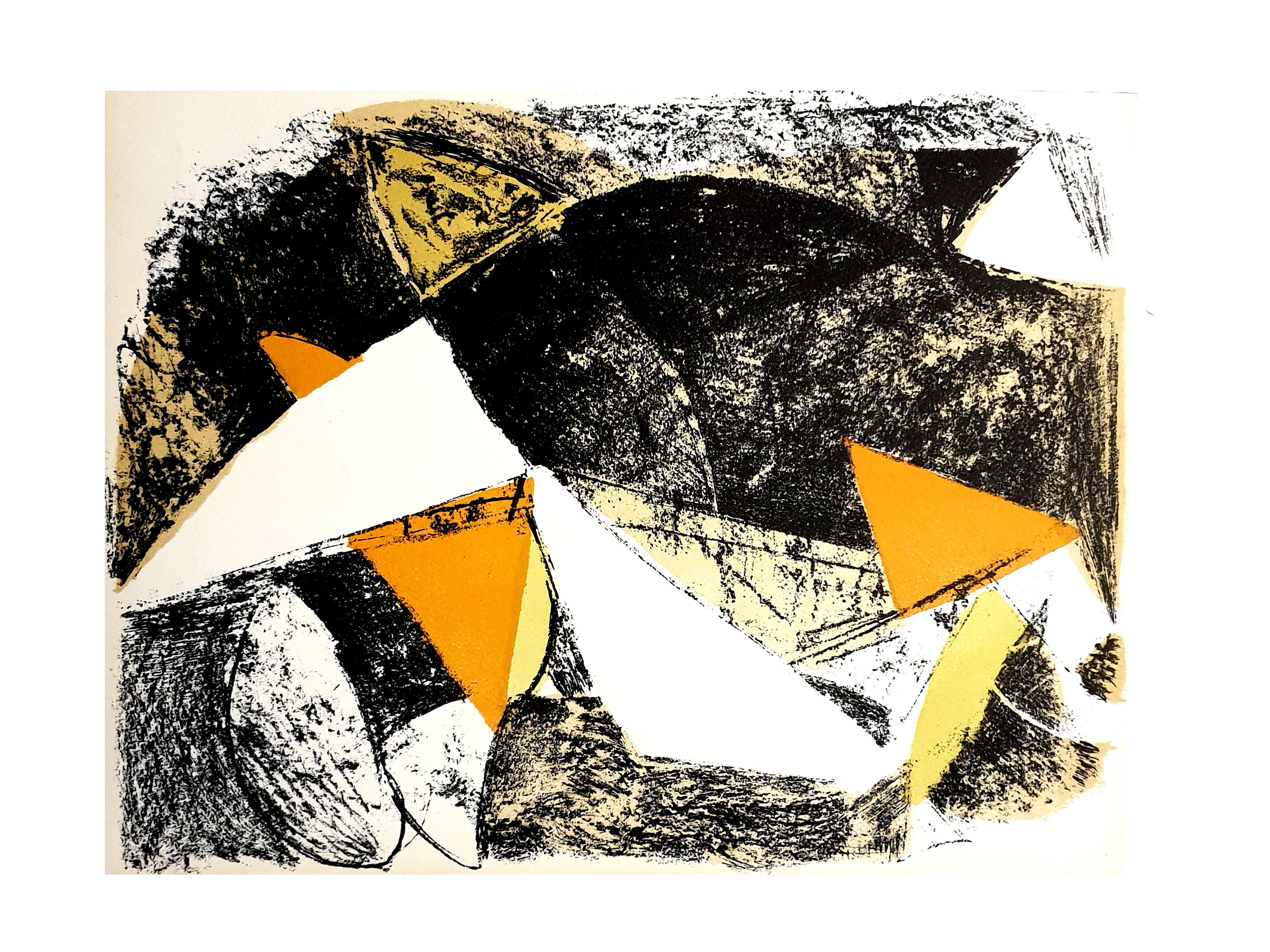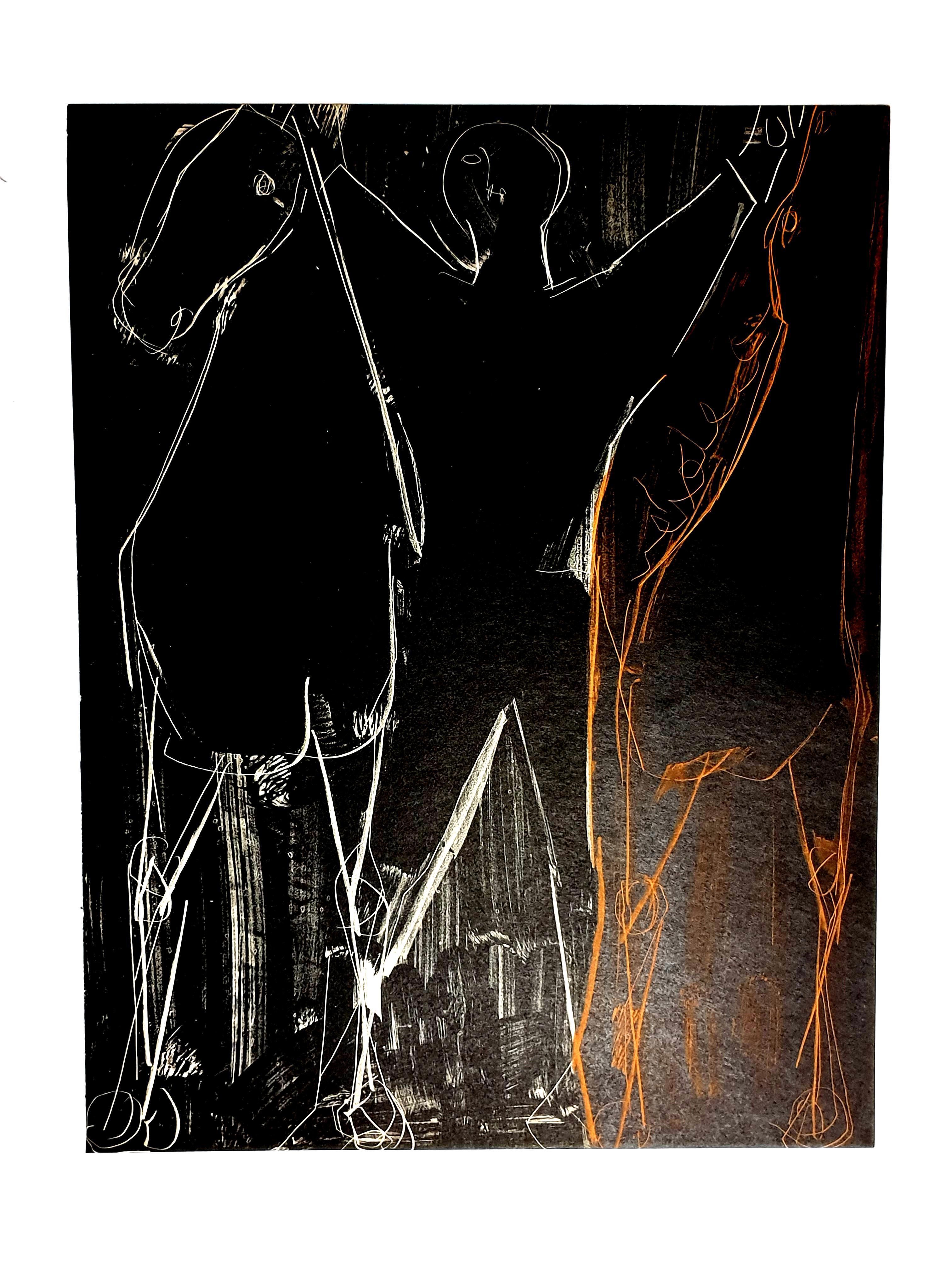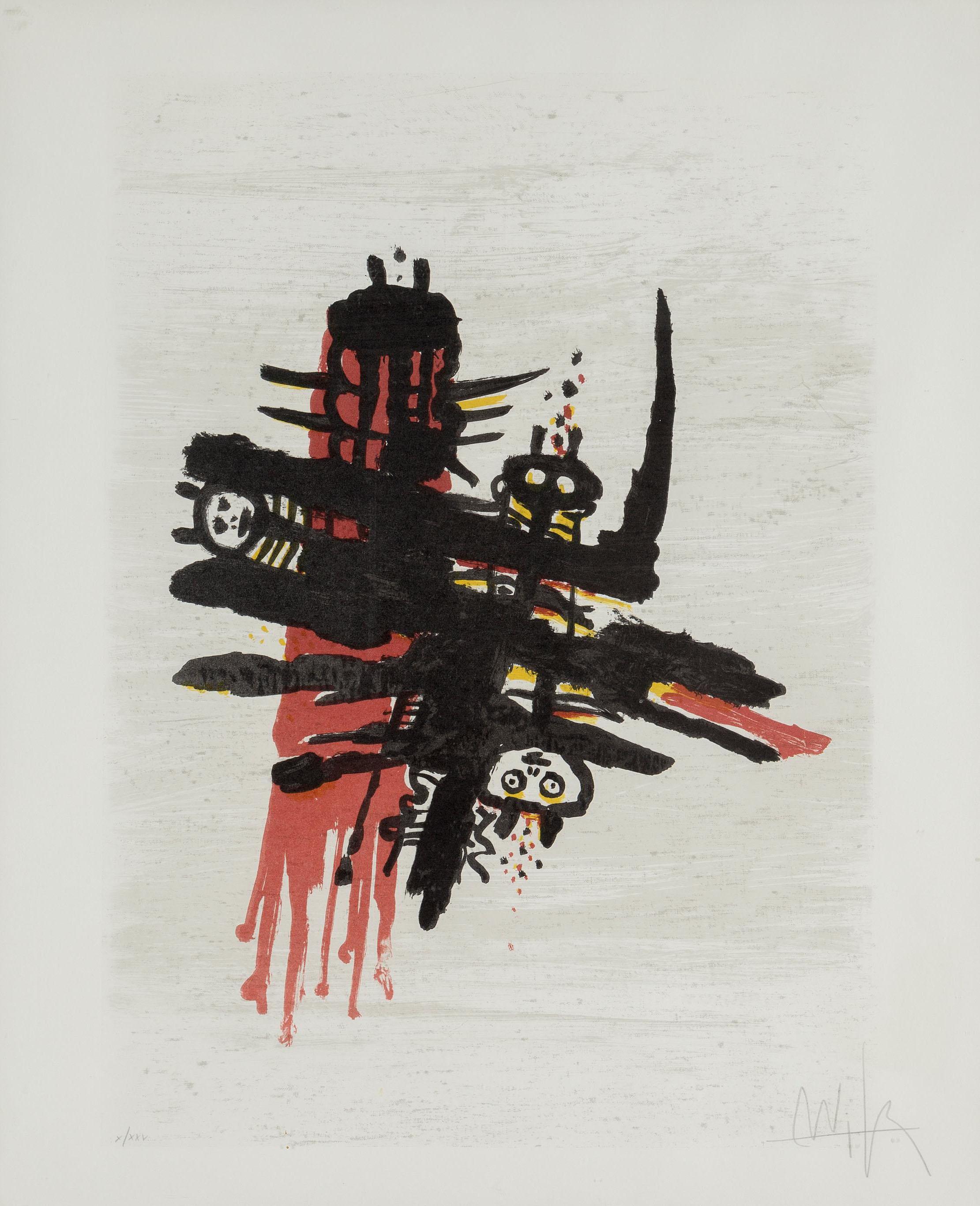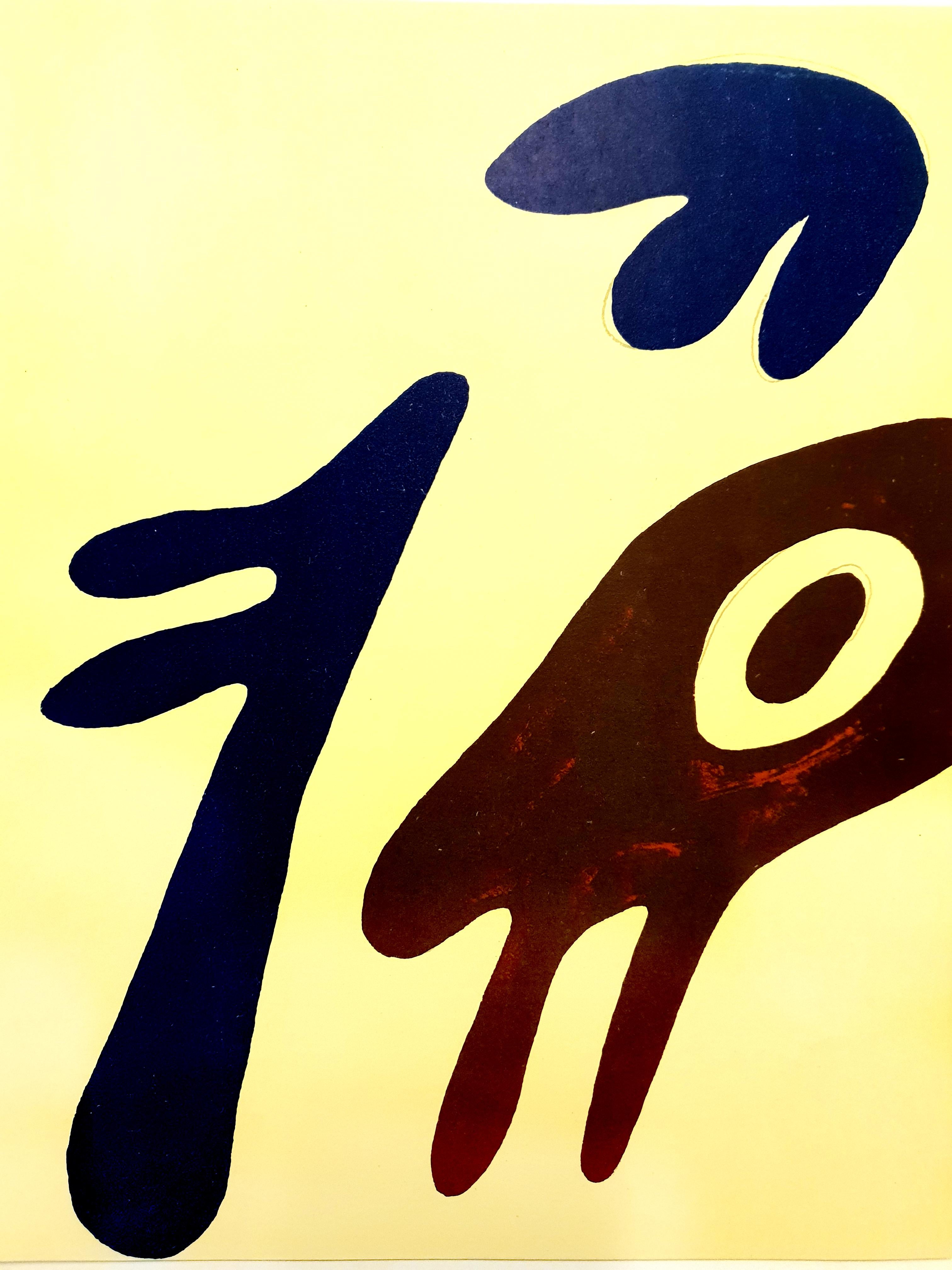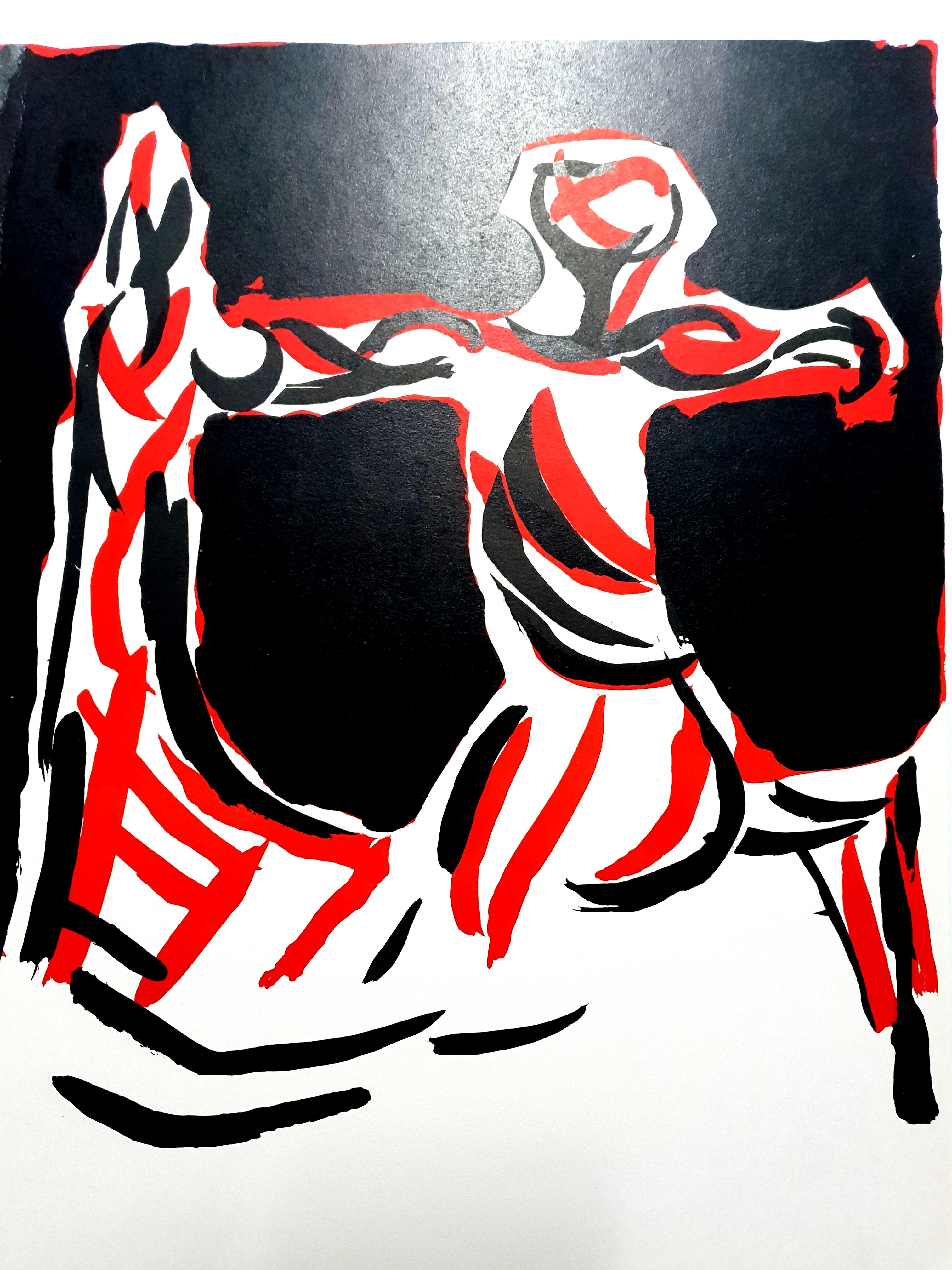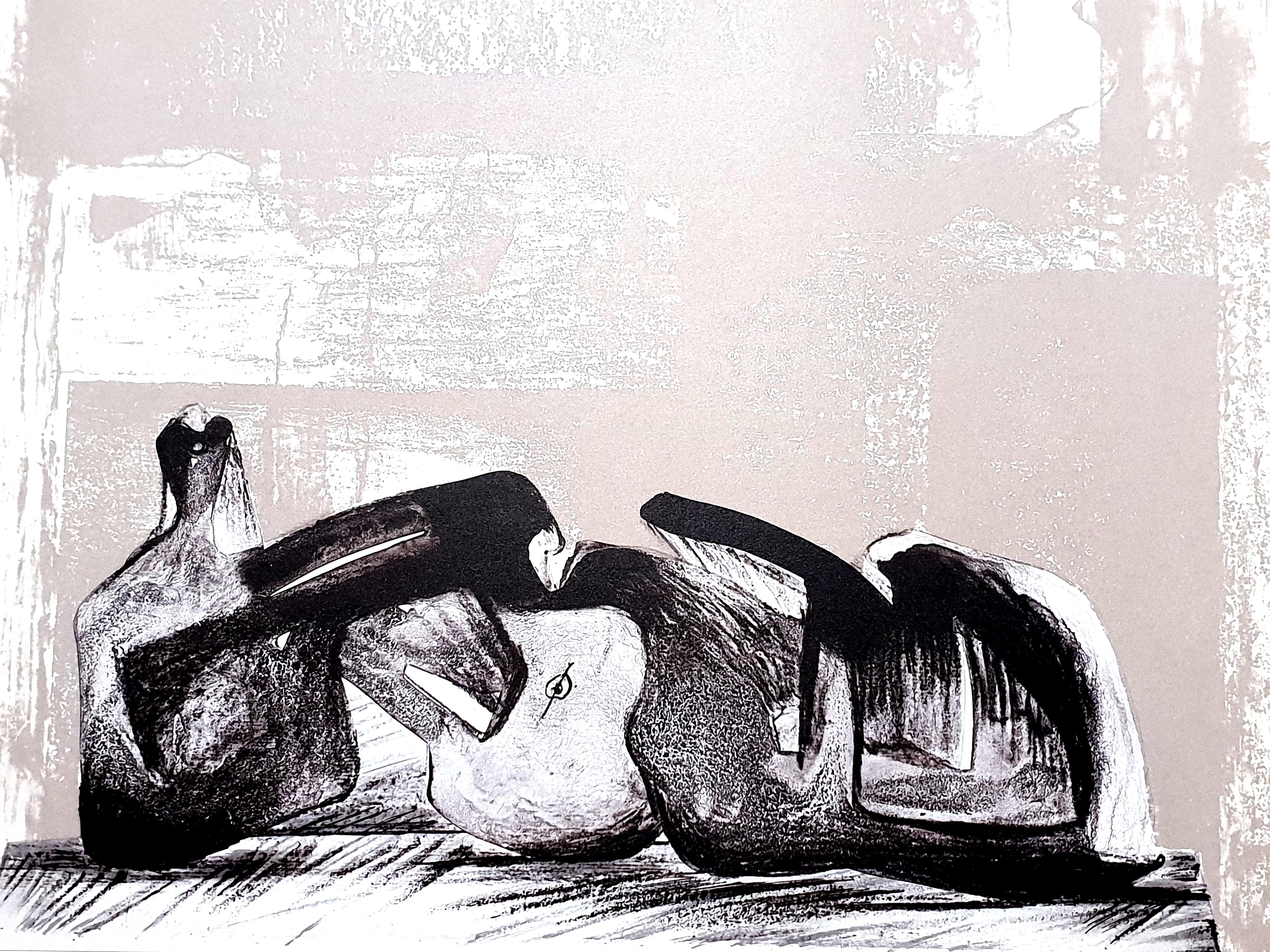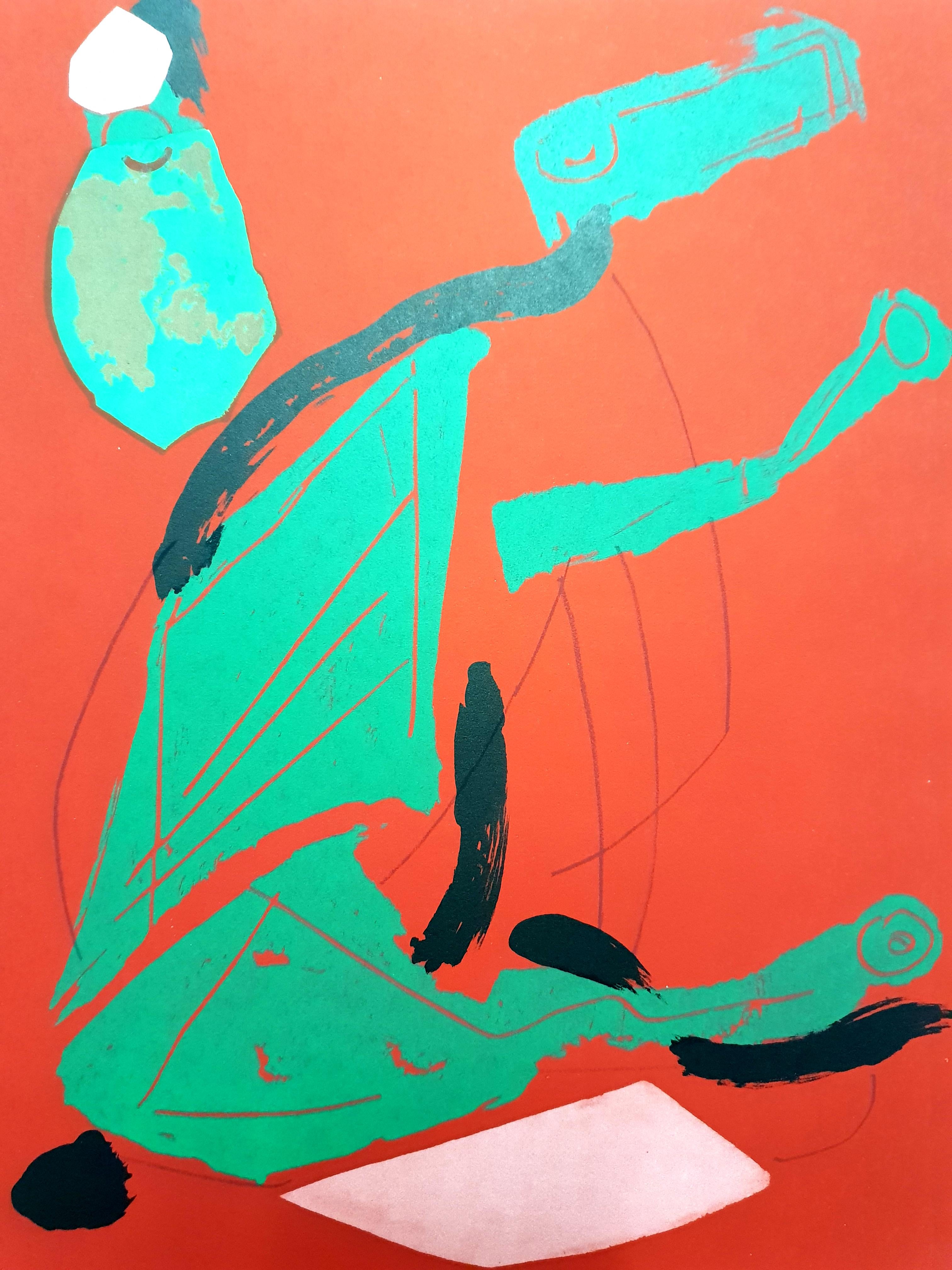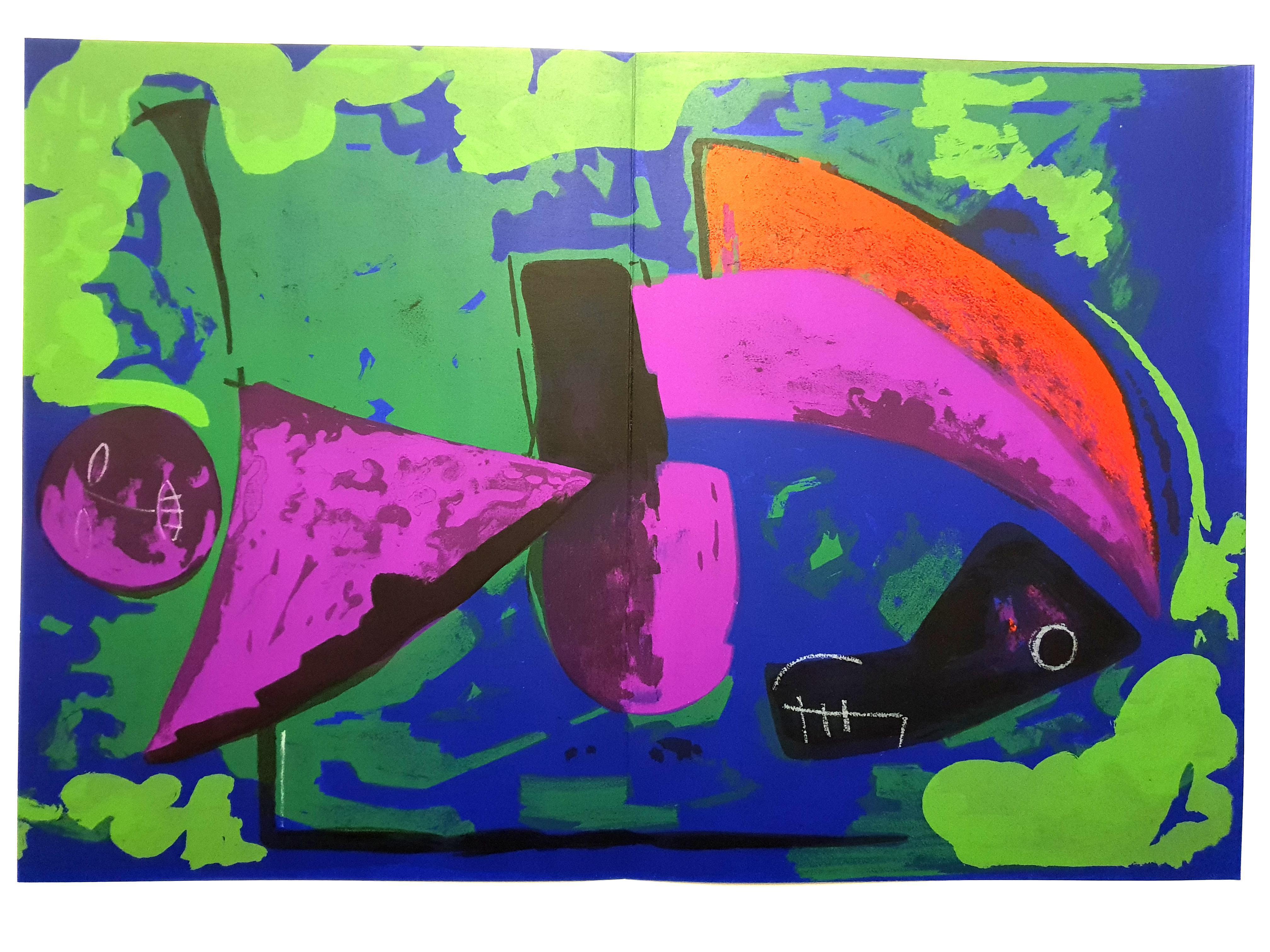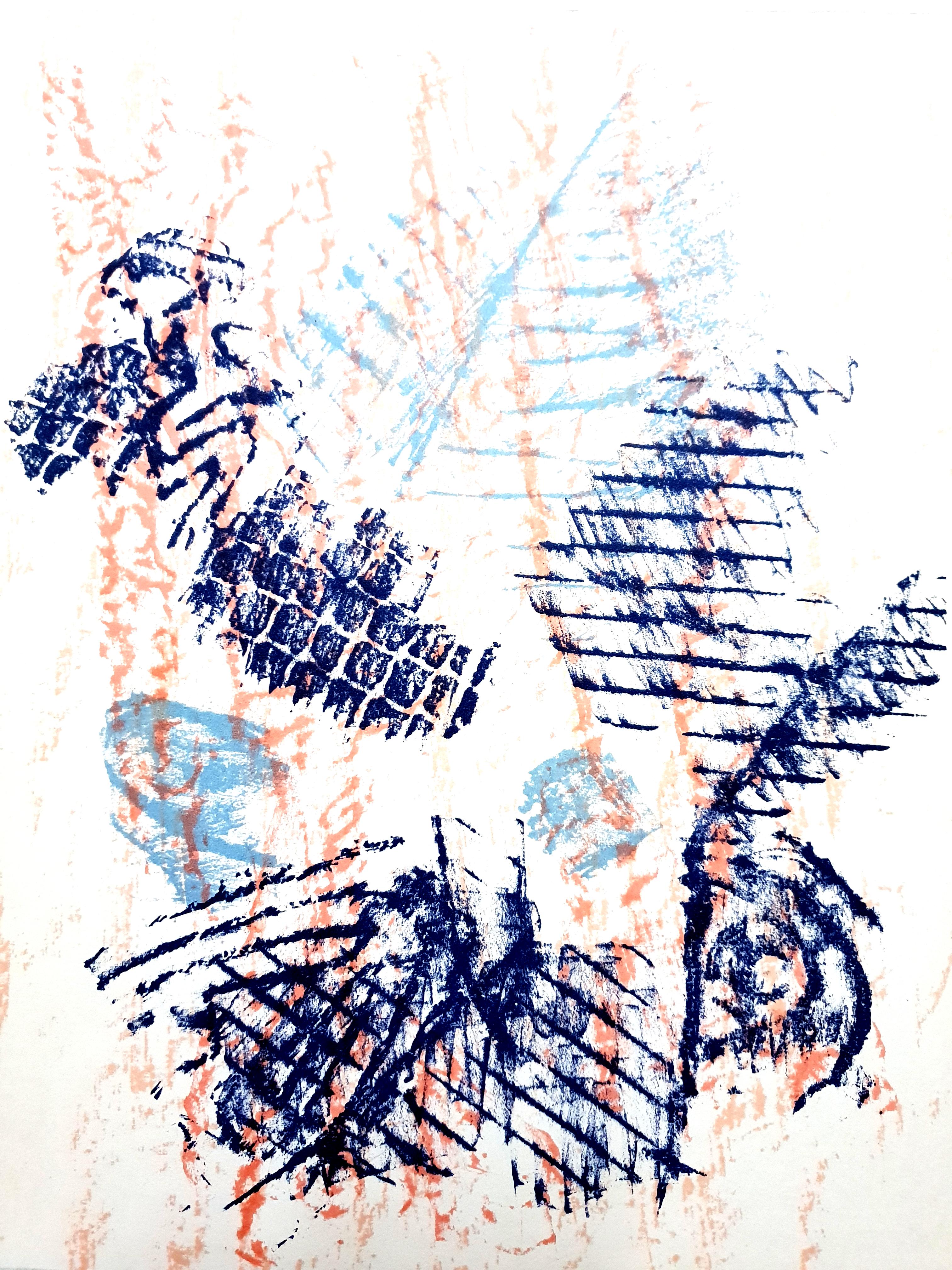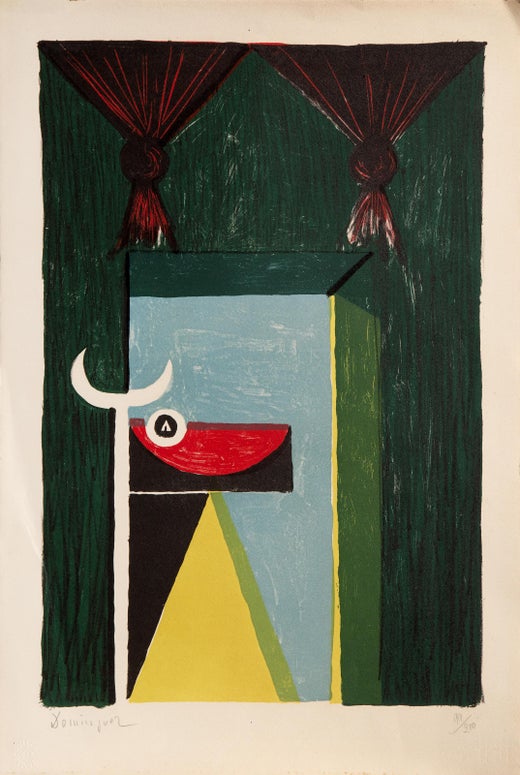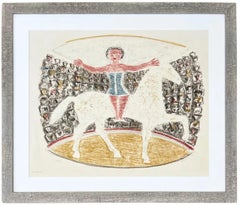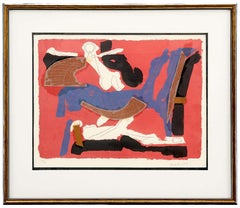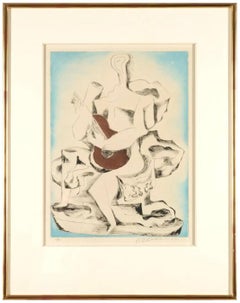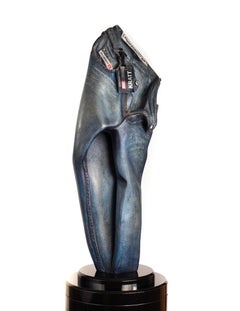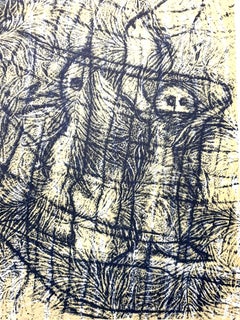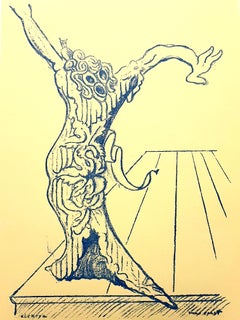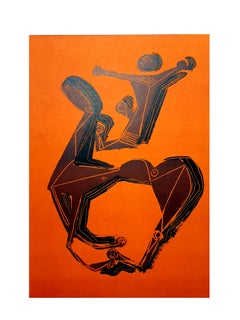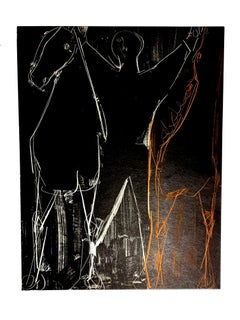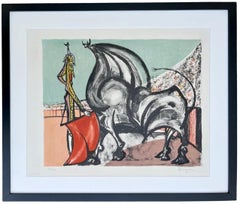
Hommage a Manolete
View Similar Items
Óscar DomínguezHommage a Manolete1955
1955
About the Item
- Creator:Óscar Domínguez (1906 - 1957, Spanish)
- Creation Year:1955
- Dimensions:Height: 22.5 in (57.15 cm)Width: 26.5 in (67.31 cm)Depth: 1 in (2.54 cm)
- Medium:
- Movement & Style:
- Period:
- Condition:Sheet size is approx. 18" x 22".
- Gallery Location:Wiscasett, ME
- Reference Number:1stDibs: LU506312036732
Óscar Domínguez
Óscar Domínguez was an abstract, Surrealist artist who popularized the decalcomania technique of layering thin sheets of gouache on paper and then applying it to canvas. He practiced Surrealist automatism, which was used prominently by early 20th-century Dadaists. In a trance-like state, the artist becomes a conduit through which uninhibited, raw thoughts can flow through a paintbrush, pen or other tool. The result is the uncanny imagery of the subconscious mind realized in paintings and sculptures.
Domínguez was interested in art at a young age, due in part to the acromegaly disease that kept him from more physical pursuits. He found solace and freedom in creative expression. He spent his youth on the Spanish island of Tenerife in the Canary Islands, raised by his grandmother. At 21, Domínguez moved to Paris, France. He worked for his father’s fruit export business by day. At night, he frequented cabarets and immersed himself in the culture. He also avidly visited museums and attended classes at different art schools. He became enamored with the works of Spanish artist Pablo Picasso and French painter Yves Tanguy, which influenced his early paintings and drawings.
Domínguez had his first solo show in 1933 at the Círculo de Bellas Artes in Tenerife. His work is in the permanent collections of the Art Institute of Chicago, the Bilbao Fine Art Museum and the Museum of Modern Art in New York. Domínguez’s paintings and sculptures influenced artists like Max Ernst and Hans Bellmer.
On 1stDibs, find a selection of Óscar Domínguez’s paintings, prints and multiples and drawings and watercolors.
More From This Seller
View All1950s Futurist Figurative Prints
Lithograph
1970s Abstract Abstract Prints
Lithograph
1960s Cubist Abstract Prints
Etching, Aquatint
Early 2000s Pop Art Still-life Sculptures
Limestone
Early 2000s Pop Art Still-life Sculptures
Limestone
2010s Contemporary Abstract Sculptures
Marble
You May Also Like
1960s Surrealist Animal Prints
Lithograph
1930s Surrealist Animal Prints
Lithograph
1950s Surrealist Animal Prints
Lithograph
1950s Surrealist Animal Prints
Lithograph
1960s Surrealist Animal Prints
Lithograph
1970s Surrealist Figurative Prints
Lithograph
